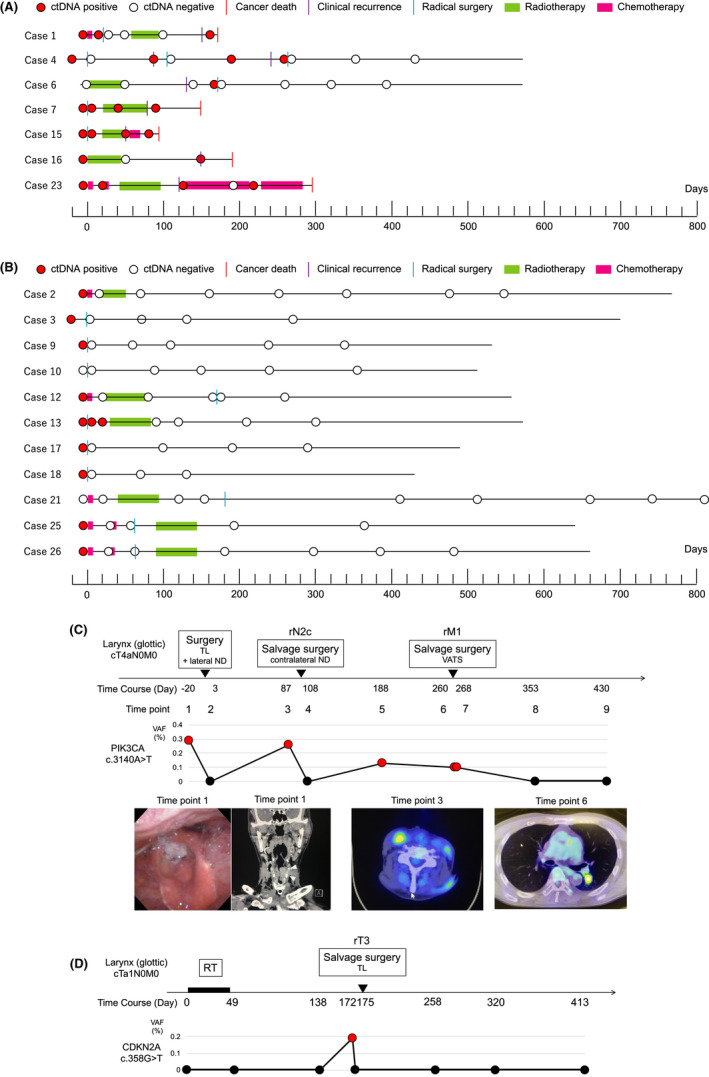FIGURE 2.

(A) ctDNA monitoring in ctDNA‐positive cases after the initial curative treatment (n = 7). ctDNA status and clinical course are represented on horizontal lines. The x‐axis shows the time series of cases. Day 0 indicates the start date of the initial curative treatment. Red and white circles indicate ctDNA‐positive and ‐negative cases, respectively. (B) ctDNA monitoring in ctDNA‐negative cases after initial curative treatment (n = 11). ctDNA was never detected in the observation period in two cases (Cases 10 and 21). (C) Case 4, representative case, which is laryngeal cancer (glottic) cT4aN0M0. Clinical course and ctDNA monitoring (PIK3CA c.3140A>T) are shown. (D) Case 6, which is laryngeal cancer (glottic) cT1aN0M0. Clinical course and ctDNA monitoring (CDKN2A c.358G>T) are shown. TL, total laryngectomy; ND, neck dissection; VATS, video‐assisted thoracic surgery; RT, radiotherapy
